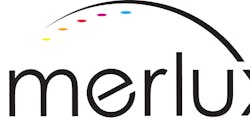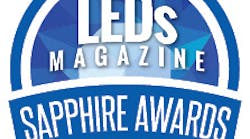In contrast, the general lighting and illumination market is heavily built upon a high voltage (HV) alternating current (AC) infrastructure that developed over the last 100 years. This presents a significant challenge in terms of cost, system and lighting product design to effectively interface a LV DC semiconductor into an HV AC infrastructure.
Advances by Osram, Lumileds and other LED manufacturers continue in both lumens per watt (lm/W) efficiency and increased power output to allow LEDs to better compete against legacy lighting. Until now, these advances have been primarily centered on the LED at the semiconductor and device package level. But higher power, even with higher efficiency, presents significant challenges to manage the heat generated by LEDs, since excess heat rapidly degrades the life of the LED.
This has warranted the development of alternative approaches to drive LEDs in order to offer reduction of LED power consumption, improved thermal management, and more cost-efficient and reliable LED lighting systems, enabling LEDs to realize their full potential.
No Return Path
Lynk Labs core technology is No-Return-Path (NRP). The basic principles behind NRP technology fall under Maxwell's theory of displacement currents, which states that when an electric field changes in time, there is a displacement current. There is no need for a DC return path to deliver power to LEDs, OLEDs or other devices. The dipoles in matter and in the electromagnetic vacuum can move back and forth in the presence of a longitudinal alternating electric field. A positive charge moving in the direction of the electric field contributes equally to the current as a negative charge moving in the opposite direction. There does not have to be a net displacement of charge, from left to right for example, to have an electric current flow. LEDs have typically been driven with DC power sources but may be driven with AC more efficiently using NRP based drivers, lamp modules or LEDs.
Lynk Labs is presently applying NRP technology to LED lamp modules and drivers that are compatible with AC utility infrastructures and other sources, including many design approaches for traditional DC power source applications.
All of the possible embodiments of NRP technology are quite far-ranging in scope and application within the electronics product market. Mike Miskin, Lynk Labs president, says the company is initially targeting AC infrastructure applications, including backlighting of LCDs, signage and architectural lighting.
Lynk Labs is now planning an early 2005 release of a new C3LED Lighting System™ to address the design and integration gap that presently exists between LED device makers and lighting product manufacturers.
C3LEDs and LED systems
The C3LED system consists of a lamp module using C3LEDsTM (a new type of LED having an independent driver) LED lamp module and C3D™ drivers. The C3LED lamp modules have independent micro-drivers at each LED that are driven by the C3D driver. As a "dual end solution" it provides a single, scaleable source driver that can drive any LED designed into a C3LED lamp module with total flexibility of the source input. This allows ready mixing and matching of any color-, voltage- or current-specified LED to a single C3D driver.
Heat generated by inefficient drivers is transferred to the LED device and directly affects the life and efficiency of the LED. With a C3LED, voltage regulators and resistors are eliminated at the circuit board level within the lamp modules. Because the C3LED system is an improved lighting system solution, it essentially yields a new type of LED with superior cost/performance when driven with C3D AC drivers.
C3LEDs will be available with some of the more popular existing packaged LED products to start with but Lynk Labs is also designing its custom C3LEDs that will be even more optimized for C3LED product and system designs.










